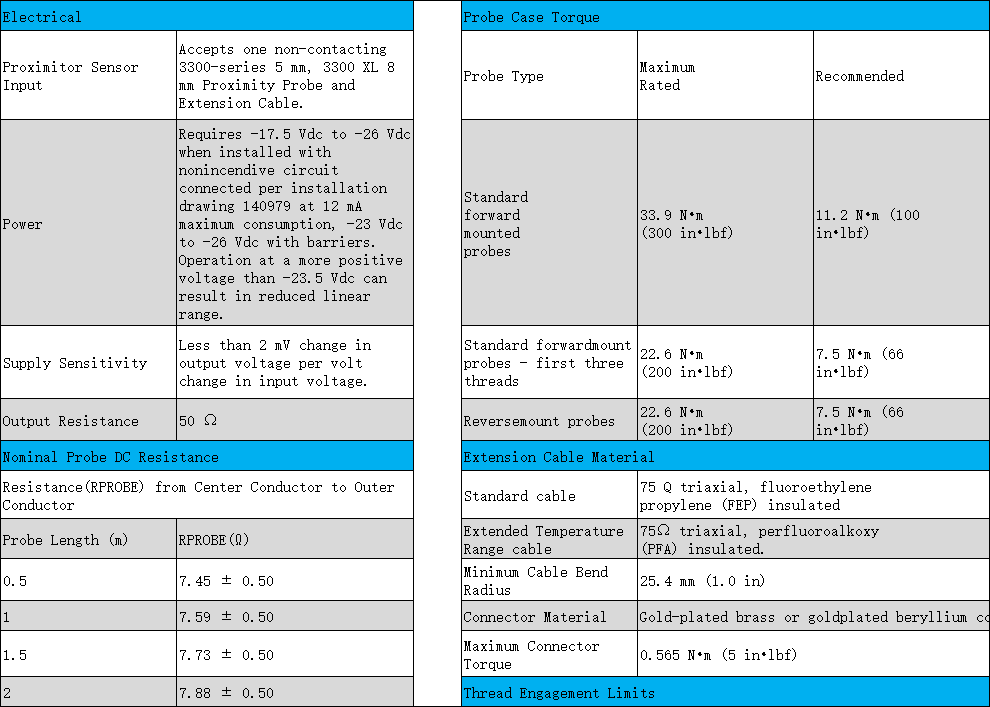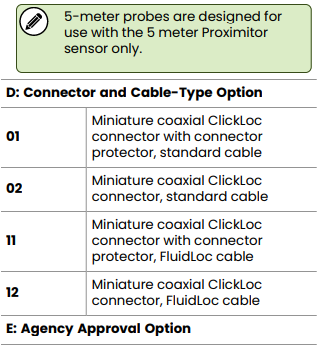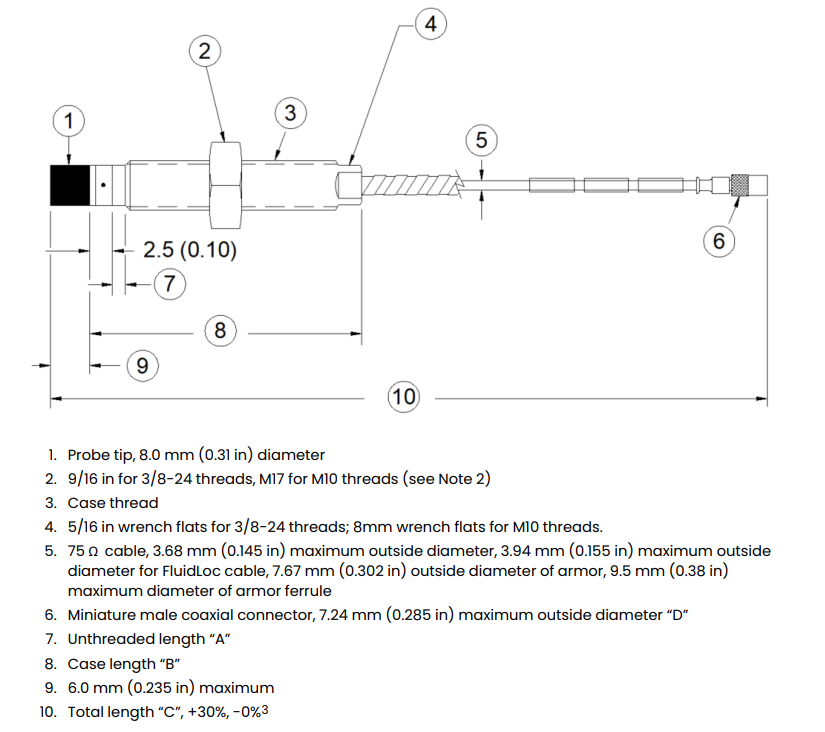330103 is a probe model under the 3300 XL 8mm Proximity Transducer System. This probe features M10 x 1 threads and is non-armored. (Note: M10 x 1 is a metric fine thread with a 10 mm major diameter and 1 mm pitch, commonly found in ISO standards for European and Asian equipment.)
The main differences between this model (330103) and model 330101 are:
1. Different thread type
2. This model does not offer a 3-meter length option
This probe is primarily used for vibration and position measurement in oil film bearing machinery, as well as keyphasor reference and speed measurement. It fully complies with the American Petroleum Institute (API) 670 standard regarding mechanical construction, linear range, accuracy, and temperature stability. It remains backward compatible and interchangeable with corresponding components from non-XL 3300 Series 5 mm and 8 mm systems.
The probe cable incorporates the patented CableLoc® design, which provides a pull-off resistance of 330 N (75 lbf), ensuring a more secure connection between the cable and the probe tip. Cables with the FluidLoc® option are also available for order. This option prevents oil and other fluids from migrating along the inside of the cable out of the machine.
Notes:
1. One-meter systems do not use extension cables.
2. Mixing model 330103 with corresponding components from non-3300 XL Series 5 mm and 8 mm systems will limit the overall system performance to the specifications of the non-3300 XL 5 mm and 8 mm transducer systems.
3. 3300 Series 5 mm probes feature a smaller physical package; however, they do not reduce side-clearance or probe spacing requirements compared to 8 mm probes. The 5 mm probes are intended for use where physical (not electrical) constraints prevent the use of an 8 mm probe. If your application requires a narrow side-view probe, use the 3300 NSv eddy current sensor system.
4. 8 mm probes feature a thicker probe coil package housed in a molded PPS plastic probe tip. This construction makes the probe more robust. The larger probe body diameter also contributes to a more rugged housing. It is recommended to use an 8 mm probe wherever possible to provide maximum robustness against physical damage.
5. All genuine products come with a one-year warranty. Shipping will be handled via DHL/FEDEX/TNT/UPS or other methods. If you have any questions before purchasing this product, please contact us.
Support:
Every Bently Nevada 330103 proximity probe undergoes rigorous quality verification to ensure compliance with published specifications and performance standards. The product carries full certification for operation in appropriate industrial environments and is accompanied by comprehensive documentation, including calibration certificates and traceability records. We provide complete technical support for installation, commissioning, and operational guidance to ensure the optimal implementation of your machinery monitoring systems.



















































